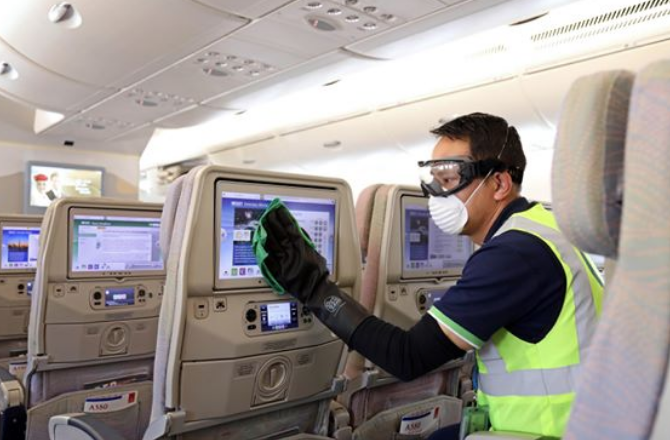
Travel, as we know it is no longer the same. The global health crisis has upended the industry, just like many others, and compelled it to adjust to a new reality. The decision to close borders to save lives was catastrophic for an industry that depended for its survival on people leaving their home countries to visit places around the world.
The good news is that as international borders are slowly opening up again, travelers are overcoming their initial concerns to get on planes. No doubt, their attitudes are certain to have shifted through this time. While it is still unclear how permanent the change will be, it is important for travel industry stakeholders to understand traveler concerns and address their expectations.
According to data interpreted by Crowd Analyzer, the Dubai-based data intelligence provider and social media listening platform, the volume and sentiment of conversations around the aviation industry during COVID-19 underwent a shift from January to June 2020.
Using its analytical tool, the platform looked at 11 million social media user activities of several travel airlines in the Middle East and North Africa (MENA) region during the six-month period, to explore the general attitude towards traveling again.
Were people still talking about travel during the pandemic?
There was a time when travel was routine, it was as simple as booking the flight and being at the airport on time. Then came the pandemic, and travel is not so easy anymore. Regardless, people are not able to forget about traveling. When flights were available in a limited capacity during March, social media interaction levels increased. Travelers still interacted with the airlines, and people were still following up on airline updates.
As with all things that are destined to change, people had to adjust to the new reality of traveling. Most interactions involved excitement about hopping onto a plane. It did not matter that airports now insist on masks and gloves, or that physical distance is required, and that a trip through an airport usually leads to enforced quarantines. In fact, users expressed their satisfaction that those policies were implemented to ensure their own safety. So, when countries started opening up their borders and flights returned to a ‘new normal’, it came as no surprise that positive interactions with airlines exceeded the negative ones.
How did people feel about the travel limitations during the pandemic?
When they were impressed, the majority of the customers (31.3%) provided positive feedback in response to the airline industry’s attempts to make them feel supported and comfortable during turbulent times. The findings also showed that the conversation threads that elicited the most positive consumer sentiment in the past six months focused on maintaining safety precautions (25.4%) and the efforts taken to resume flights (20.1%).
However, in instances where travelers expected more from the airlines and their expectations were not met, they took to social media to voice their displeasure over refunding issues (63%) and flight cancellations (29%).
“The airline industry is under the spotlight far more than it has ever been, especially with consumers relying on social media to communicate challenges from cancelled holidays to refunding issues. At this juncture, what’s interesting about the social conversations we’re seeing is that they provide us with insights into how airline consumers are feeling and what they are doing to cope during these challenging times. Sentiment is a key metric that airline brands need to leverage to identify areas of improvement, and rethink how they engage and support their customers,” Ahmed Saad, CEO and Co-founder of Crowd Analyzer, said as he highlighted how social media networks have become important public discussion forums while enabling brands to better understand their consumers during COVID-19.
When flights returned in June, people mostly reacted with optimism. Despite wanting to travel again, they were aware of the safety precautions and measures that the travel sector needed to implement. Posts that demonstrated the priority of airlines to ensure the safety of passengers gained the most engagement, which means airlines are held accountable by travelers.
Our aircraft cabins are among the cleanest in the skies. Learn more about our health and safety measures at every step of the travel journey: Emirates.com/yoursafety
Posted by Emirates on Tuesday, 23 June 2020
We are unique in the industry to have a dedicated crew member who will ensure the highest standards of onboard…
Posted by Emirates on Sunday, 28 June 2020
Why is it crucial to readapt to the current situation?
As a result of the pandemic, the world has witnessed so many changes. People are now judging airlines by their ability to adapt quickly to the new situation. They have accepted the new reality of traveling, because it is a new of living life.
Clearly, this is a scenario where the fittest will survive. There is no playbook on how airlines should proceed in the post COVID-19 future. However, one thing is certain – the travel sector is resilient. Consumers will always look forward to traveling on planes. This indicates that there is an element of expediency for the travel sector to adapt to the crisis.
For travel brands monitoring the situation, Crowd Analyzer advises staying updated on conversation trends to adopt creative marketing methods to keep the community safe as they gradually return to traveling from one place to another. Continuing to listen to consumers and translating data findings into insights is crucial to identify what actions the travel industry needs to adapt as it puts in place sustainable plans for the future.









